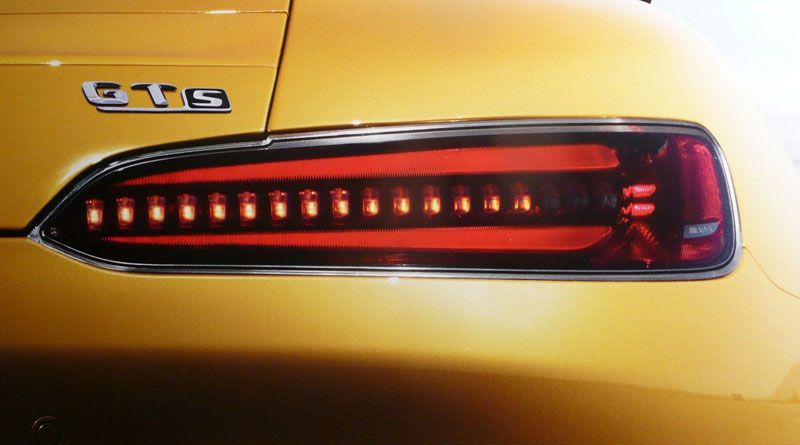Maintaining your car, especially a sophisticated brand like BMW, is a big responsibility. Occasionally, you would have to do some repairs and replacements, including addressing issues related to the BMW CAS (Car Access System). Most people think getting it done by a professional is the best bet. However, for some minor issues like repairing tail lights or handling BMW CAS Repair, car owners can take matters into their own hands. If you’re facing challenges with your BMW CAS, check out this informative resource on BMW CAS Repair for valuable insights and solutions.

With that said, it also needs to be brought to light that tail light issues are often caused by some other electrical problem. If you encounter a problem with the wiring, it will be good to have a professional opinion. But if you are determined to repair tail lights, you will have to understand the differences between the tail lights of different vehicles and the tools needed.
Steps to Follow

The following steps will let you know if the problem with the car’s tail lights can be fixed at home or if it needs professional expertise.
1. Things to Have
Bulb(s) – Compare the quality with how much tail lights cost.
Flashlight
Fuse and fuse pulled
Small ratchet
Gloves
Deep wall sockets (10mm and 8mm)
2. The Replacement
Most probably, you would be encountering a burned-out bulb. It would be best if you try to first replace the bulb with a new one and see if it works. Diving into the fuse connections right away when all you needed to do was replace the bulb would be a waste of time and energy. Do not test the replacement with the car turned on. Here is how you do it:
Step I: Find the tail light access panel in the trunk. This is a carpet or plastic door attached with a latch. Simply open the door to access the back of the tail lights.
Step II: For most of the car models, you would have to unbolt the tail light housing to change the bulbs. Remove the nuts through the ratchet and sockets. Another thing to consider while repairing your tail lights: Consider replacing all the bulbs even if they are still working. It is advisable because doing so will save you time as all the bulbs will burn out at the same time. Otherwise, you would have to repeat this process with each burned-out bulb.
Step III: Now you need to have access to tail lights. For that, you will have to unlock the tail light socket. Twist the socket counterclockwise and remove it to access the bulb you need to replace.
Step IV: Now that you are in, it is a good idea to check the wiring to see if it is frayed or broken. Make sure the ends are well connected and the wires look visually intact.
Step V: Inspect the burnt-out bulb after removing it. The removal of the bulb would be different based on its base. For bulbs with a rectangular base can be pulled from the socket while bulbs with a round base will have to be twisted out of the socket. The inspection of the bulb includes looking at the filament and also at burn marks on the bulb.
Step VI: Now comes the interesting part, replacing the bulb. Always wear gloves while handling tail lights and bulbs as the natural oil of your fingers can cause the bulb to get heated or worse, cracked. If you want to change other bulbs like the turn signal lights, reverse lights, and brake lights, follow the same steps.
Step VII: Once the bulb is fixed in place, you will have to check the bulb to see if it is working properly. If the bulb does not light up, check the connections and try again. If it still does not work, it might be time for a mechanic to take a look. If the bulb works perfectly, assemble all the parts as you found them.
Step VII: As mentioned above, you would have to reassemble the sockets and access panel. After the bulb is fixed in place (twist it clockwise for round base bulbs), close the sockets and the panel doors.
3. Broken Assembly
While most of you will stop reading after the second point, some of you will encounter a broken assembly. In such cases, you have two options. Either you repair it to the best of your abilities or you replace it altogether. When it comes to repair, you would have to be careful to find a relatively permanent solution. Replacing the assembly can be done at home or by a mechanic. It all depends on your comfort with tools and mechanics.
To repair small cracks, buy reflective tape to patch them up. Follow the directions mentioned in the user guide. Clean the tail light before sticking the reflective tape onto it for it to stick properly. Sometimes your tail light will have a rather significant crack. Rather than finding a temporary fix, go ahead and replace it. Moreover, if you find multiple cracks, then it is best to consider replacement rather than repair. Having a kayak rack for the car will allow you safely transport your kayak to the desired location with ease.
4. Take Care of the Fuse
Checking the fuse while replacing tail lights is a must. What if you fix a brand new bulb in working order but it stops working? Then the fault is not in the bulb but somewhere in the fuse. Go to the fuse box. In most cars, it is under the dashboard while in others it is in the engine bay.
Locate the fuse puller which allows the fuse to be visually inspected. Check the fuse for cracks and see if the filament inside is intact. If you spot any damage or have any doubts about its working, replace it.
The Takeaway
Replacing tail lights is not something to worry about. You can always go to a professional if you are unsure about the process. But sometimes, you can do it yourself. Especially if you are comfortable handling electricals. But always be ready to accept the help of a professional in case you encounter a problem that cannot be solved at home. Take care of your car; it will keep you safe.

Namaste UI collaborates closely with clients to develop tailored guest posting strategies that align with their unique goals and target audiences. Their commitment to delivering high-quality, niche-specific content ensures that each guest post not only meets but exceeds the expectations of both clients and the hosting platforms. Connect with us on social media for the latest updates on guest posting trends, outreach strategies, and digital marketing tips. For any types of guest posting services, contact us on info[at]namasteui.com.

